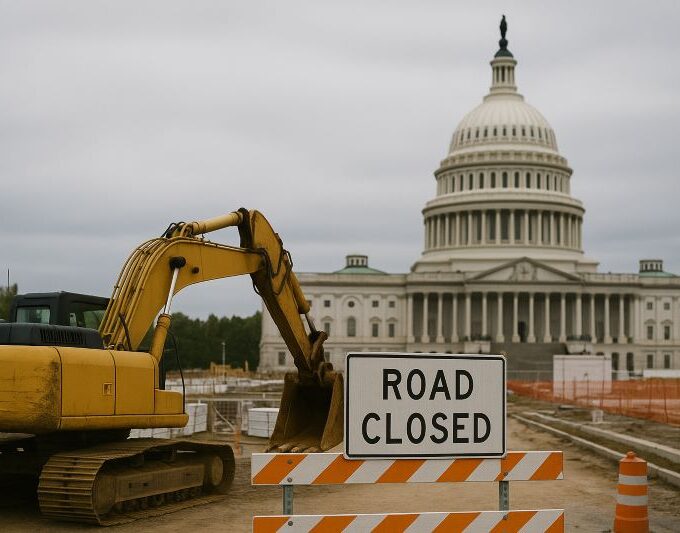On May 7, a White House spokesperson stated that the U.S. Department of the Treasury and the Department of Commerce had drafted a plan for establishing a sovereign wealth fund, as required by the executive order signed by President Trump in February. However, parts of the proposal were rejected by the White House, making significant short-term progress unlikely.
Often described by the media as a “national super investment account,” a sovereign wealth fund refers to public assets controlled by a national government, typically held in foreign currencies. In the U.S., there has long been debate over whether such a fund should be created at the federal level, and opinions vary on what the government ultimately hopes to achieve with it. In the latest discussions around U.S. economic strategy, some analysts argue that in the context of escalating geopolitical tensions, the sovereign wealth fund is being positioned not just as a financial tool, but as an instrument of diplomacy, industrial policy, and broader national strategy.
“Tremendous Potential” vs. “An Incomplete Idea”
“We have tremendous potential, and I believe that in a short time, we will have one of the largest funds in the world.” In February of this year, after returning to the White House, President Trump signed an executive order directing the creation of a sovereign wealth fund at the federal level. The order required the Treasury Department and the Department of Commerce to submit a related proposal within 90 days. The order also stipulated that the proposal should include recommendations on financing mechanisms, investment strategies, fund structure, and governance models, as well as an assessment of the legal issues involved in establishing and managing such a fund. Treasury Secretary Bessent stated that the fund could be established within 12 months.
According to a CBS report on May 7, Treasury Secretary Bessent and Commerce Secretary Lutnick submitted the required plan within the 90-day deadline. However, the White House reportedly expressed “concerns” over parts of the proposal. Sources told CBS that many details regarding the fund’s operational framework remain under debate, making significant short-term progress unlikely.
Since the executive order was signed in February, the idea of establishing a U.S. sovereign wealth fund has remained controversial. Key questions include: How large would the fund be? Where would the money come from? Although the order did not specify the fund’s initial size or target amount, Trump stated in September 2023 that the fund should be “close to or exceed $2 trillion.” For comparison, the world’s largest sovereign wealth fund—Norway’s Government Pension Fund Global—holds around $1.743 trillion in assets. As for funding sources, Trump suggested tariff revenues could be used.
Many U.S. economists have expressed skepticism. Former Treasury Secretary Larry Summers said in September 2023 that, given the U.S.’s unresolved budget deficit issues, creating such a fund is an “incomplete idea.” In fiscal year 2024, the U.S. federal deficit reached $1.83 trillion, with a trade deficit of $918.4 billion.
Another point of contention is the fund’s purpose. What would the money be used for? During his campaign, Trump said the fund would support “great national projects,” such as infrastructure, manufacturing, and medical research. When he signed the order in February, he also hinted it could be used to acquire TikTok.
Bessent has stated the fund’s aim is to monetize federal assets “for the benefit of the American people.” According to American Enterprise Institute senior fellow Stan Veuger and others, Bessent’s reference to “assets” may include Bitcoin, suggesting the fund could serve as a vehicle for building a national strategic Bitcoin reserve.
Some have speculated that the fund might also be used to pursue acquisitions of strategic regions like Greenland or the Panama Canal. Energy Secretary Chris Wright described the fund as “vital to U.S. national security.”
23 U.S. States Already Have Their Own Sovereign Wealth Funds
Globally, sovereign wealth funds are well established. According to the Sovereign Wealth Fund Institute, over $13 trillion is managed by central or local governments in more than 100 countries—equivalent to the combined 2023 GDP of Germany, Japan, and India. These funds typically invest in government bonds, equities, and real estate. More recently, sectors like AI, green energy, and EVs have become increasingly popular targets.
Typical sources of funding include budget surpluses, natural resource revenues, and foreign exchange reserves. Countries with large funds generally fall into two categories: resource-rich nations (e.g., Norway, Saudi Arabia) and trade surplus countries (e.g., China, Singapore).
By asset size, Norway’s Government Pension Fund Global tops the list with $1.743 trillion. It originated from oil revenues and earned a record $213 billion in 2023, largely from strong returns in tech stocks like Microsoft, Apple, and Nvidia. China’s State Administration of Foreign Exchange and China Investment Corporation also rank among the top. The UAE’s Abu Dhabi Investment Authority (ADIA) holds $1.11 trillion, placing fourth, followed by Kuwait Investment Authority (KIA) with about $969 billion. Other large funds belong to Saudi Arabia, Singapore, Qatar, South Korea, Australia, Turkey, Indonesia, Iran, and Russia.
George Mason University economist Tyler Cowen called the idea of a U.S. sovereign wealth fund “crazy.” He noted that successful sovereign wealth funds usually share two traits: (1) governments that run surpluses due to natural resources or trade, and (2) strong political discipline that insulates investment decisions from political interference—both of which the U.S. lacks.
The Financial Times also argued that since the U.S. federal government routinely runs budget deficits, it has no surplus capital to invest. Moreover, America’s polarized political climate raises concerns that such a fund would become politicized, undermining transparency and governance. A large federal investment fund could also have unpredictable effects on U.S. financial markets.
Investment priorities of sovereign wealth funds are often controversial. The Globe and Mail reported that Norway’s fund has faced backlash for investing in companies linked to weapons, tobacco, and fossil fuels. This led the Norwegian Finance Ministry to issue rules excluding investments that violate “Norwegian values.”
According to The New York Times, Saudi Arabia’s Public Investment Fund invested $2 billion in a private equity firm founded by Jared Kushner in 2021. Internal reviewers flagged the investment as high-risk, but Crown Prince Mohammed bin Salman overruled their concerns.
While the U.S. has yet to establish a federal sovereign wealth fund, 23 states already have their own, according to the White House. Combined, these state-level funds manage about $332 billion.
The largest is the Alaska Permanent Fund, created in 1976 using oil pipeline revenues. In 1980, Alaska established the Permanent Fund Dividend program, which pays annual dividends—about $1,700 per person as of 2024. The fund’s total size reached $79.6 billion by the end of 2024.
Another example is Alabama’s Trust Fund, established in 1985, which uses royalties from offshore gas and oil drilling to fund public projects. North Dakota’s fund has also grown rapidly in recent years.
A Tool for U.S. Economic Diplomacy?
Some U.S. experts believe that if managed properly, a sovereign wealth fund could provide strategic advantages. Jerry Haar, a business professor at Florida International University, argued that sovereign wealth funds—around for over a century—can stabilize national finances, boost long-term competitiveness, and generate national returns. They can also enhance global economic influence and reduce reliance on foreign investment. He believes the U.S. should take the idea seriously but implement it with safeguards and strict independence.
Media commentator Courtney Fingar noted that clear priorities and a well-defined mandate are essential. She suggested the fund focus on infrastructure, especially long-term investments in aging systems, manufacturing, renewable energy, critical minerals, and semiconductors to strengthen supply chains.
A report on the Wilson Center’s website emphasized that to prevent corruption and political interference, U.S. sovereign wealth fund investments should be concentrated internationally, not domestically, and managed by an independent, neutral board—similar to the Federal Reserve structure.
However, using the fund for international investments may carry political weight. In December, Yale Journal of International Affairs published an article titled “Wealth and Diplomacy: The Foreign Policy Dimension of a U.S. Sovereign Wealth Fund,” which argued that such a fund could become a “powerful tool of U.S. economic diplomacy.” It may serve as a gentler alternative to military aid or sanctions, helping forge deeper economic ties with strategic partners. The article also proposed applying a “moral framework” to prioritize sustainability, human rights, and good governance.
Another Wilson Center article claimed a U.S. sovereign wealth fund could “help America win the geoeconomic competition in the Indo-Pacific.” Nirmal Singh, a researcher at the University of Sussex, argued the fund’s design should reflect U.S. priorities—such as securing access to critical minerals and reducing dependence on China for refining and processing.
A recent report from Canadian think tank Geopolitical Observatory suggested the U.S. push for a sovereign wealth fund comes at a time when such funds are being redefined—not just as financial tools linked to commodities or surpluses, but as strategic instruments tied to foreign policy, industrial planning, and national power.













Leave a comment